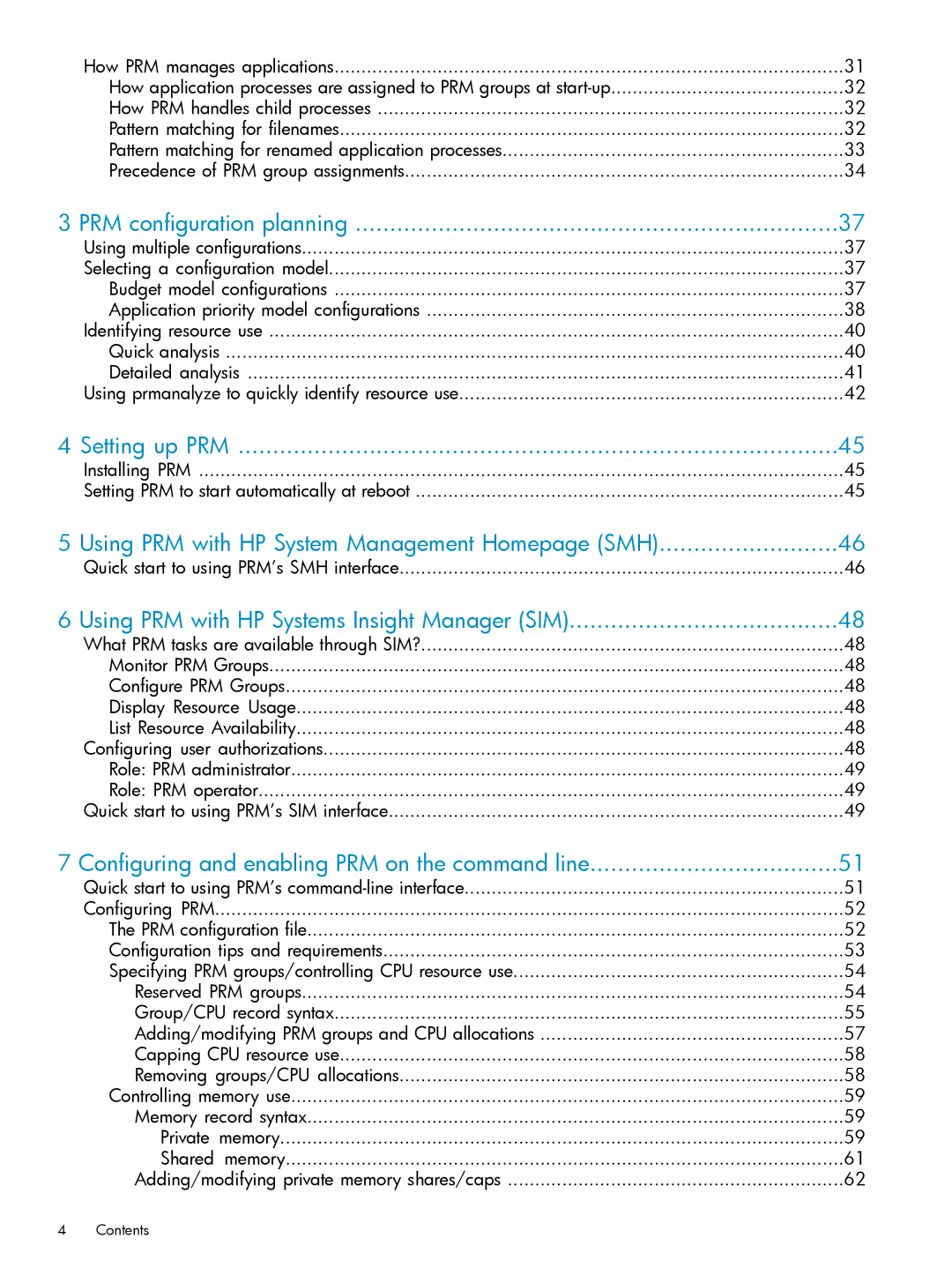How PRM manages applications | 31 |
How application processes are assigned to PRM groups at | 32 |
How PRM handles child processes | 32 |
Pattern matching for filenames | 32 |
Pattern matching for renamed application processes | 33 |
Precedence of PRM group assignments | 34 |
3 PRM configuration planning | 37 |
Using multiple configurations | 37 |
Selecting a configuration model | 37 |
Budget model configurations | 37 |
Application priority model configurations | 38 |
Identifying resource use | 40 |
Quick analysis | 40 |
Detailed analysis | 41 |
Using prmanalyze to quickly identify resource use | 42 |
4 Setting up PRM | 45 |
Installing PRM | 45 |
Setting PRM to start automatically at reboot | 45 |
5 Using PRM with HP System Management Homepage (SMH) | 46 |
Quick start to using PRM’s SMH interface | 46 |
6 Using PRM with HP Systems Insight Manager (SIM) | 48 |
What PRM tasks are available through SIM? | 48 |
Monitor PRM Groups | 48 |
Configure PRM Groups | 48 |
Display Resource Usage | 48 |
List Resource Availability | 48 |
Configuring user authorizations | 48 |
Role: PRM administrator | 49 |
Role: PRM operator | 49 |
Quick start to using PRM’s SIM interface | 49 |
7 Configuring and enabling PRM on the command line | 51 |
Quick start to using PRM’s | 51 |
Configuring PRM | 52 |
The PRM configuration file | 52 |
Configuration tips and requirements | 53 |
Specifying PRM groups/controlling CPU resource use | 54 |
Reserved PRM groups | 54 |
Group/CPU record syntax | 55 |
Adding/modifying PRM groups and CPU allocations | 57 |
Capping CPU resource use | 58 |
Removing groups/CPU allocations | 58 |
Controlling memory use | 59 |
Memory record syntax | 59 |
Private memory | 59 |
Shared memory | 61 |
Adding/modifying private memory shares/caps | 62 |
4Contents
